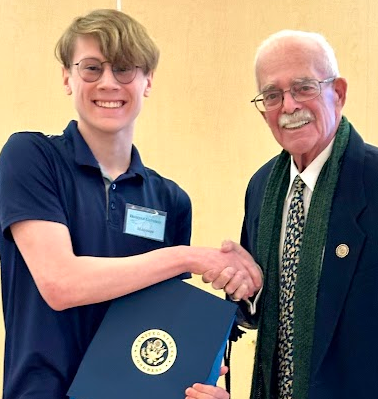Language is crucial to the formation of human connection. Communication being a key element of humanity, as the language one speaks shapes their personality, the way they interact with society, community and relationships. There are around 6,500 languages spoken in the world today, each with its own identity and culture. At Madison, students engage with these languages through the World Languages department. Taking a foreign language is a requirement for graduation. This includes reaching level three of one language or two years of two.
But many students choose to go above the specified requirements and go further in their studies. The majority of students choose to study French or Spanish. But Chinese, Arabic, Vietnamese, Korean and American Sign Language (ASL) are also offered as academy classes.
The World Language department describes the purpose of classes as a way for students to learn to communicate with native speakers and the cultural knowledge necessary to interact appropriately. This includes a thorough discussion of grammar concepts and skills such as reading, writing, listening and speaking. Students are graded on their proficiency in these skills.
“We really just want to give them as much exposure to the language, that’s why our classes are mostly in the language we are teaching, exposing them to culture and things they are interested in and making it as relatable as possible really entices those early learners,” Spanish teacher Emily Jensen said.
An important aspect of the language department is the inclusion of teaching students culture. Language isn’t solely vocabulary and grammar; it’s the unique customs and social systems that make up the linguistic identity of a country and understanding how other cultures perceive the world. Understanding the full social context leads to complete and thorough language acquisition.
“I think that French classes do a good job with the culture, I actually really enjoyed that part of class, I think it’s more exciting and more fun than just learning the grammar,” Noah Bohn (’25) said. “Even though we usually talk about the same countries a lot of the time and we don’t talk too much about the regional cultural differences just in France, [it’s still effective] because everywhere you go there are many differences.”
Understanding these cultural nuances can make it easier for those taking the language who want to further immerse themselves. Many students go further in these classes to travel more efficiently or even live abroad someday.
“I think doing more like French immersion could be really cool, it’s just confined to the classroom,” Bohn said. “I know the embassy hosts a lot of stuff to do and just going as a French class and being around French speakers and seeing how many people actually speak French in the area could be really cool and a way to apply the French you learn in class.”
Because Madison is not an immersive environment, most students are only exposed to the language for 90 minutes, in class, every other day, with no outside exposure to the language. This can make it so students find that the classes they take don’t allow them to truly gain competence in the language they are learning. It is very difficult for students to be enticed to stay in language classes beyond the graduation requirement. Honor societies, clubs, and good teachers encourage students to continue on with a language because it helps with retention rates in World Language classes.
“I think that we have such a variety of teachers in the world language department from anywhere and everywhere and that brings so much value to the program as a whole, everyone has something to offer.” Jensen said.



